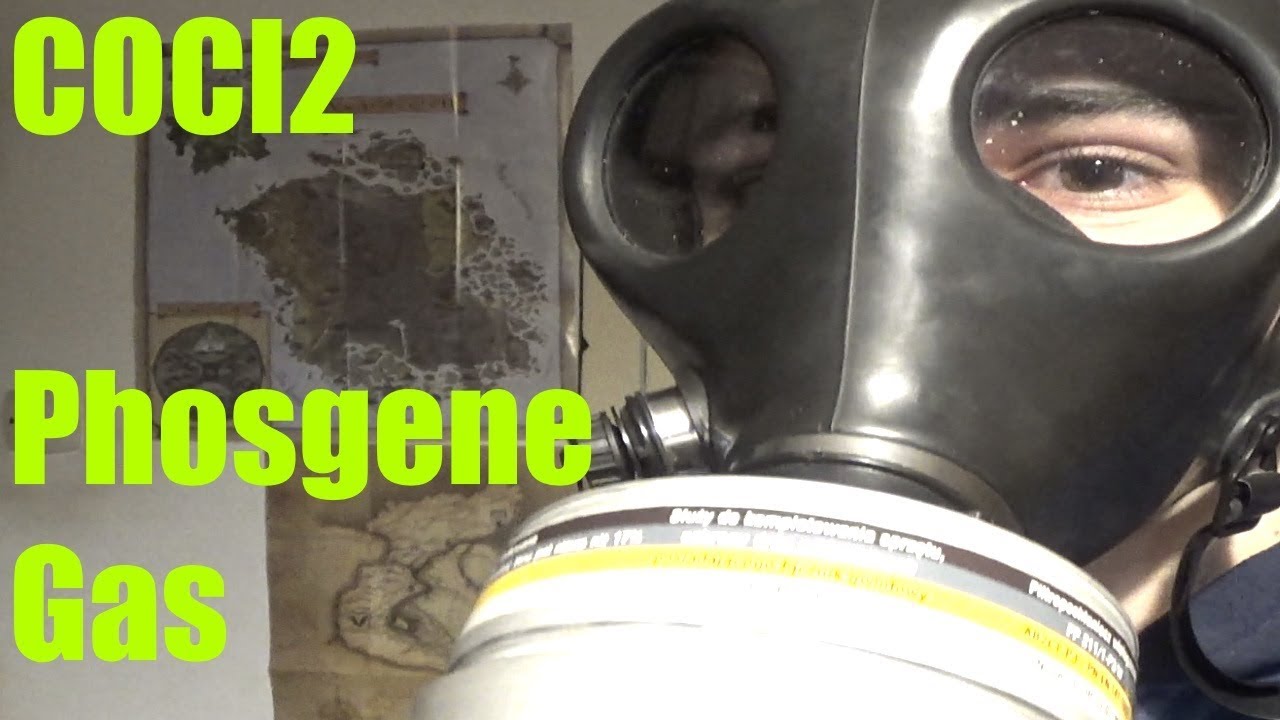
Phosgene is a highly toxic chemical compound that has played a significant role in the history of warfare and industry. This invisible, odorless gas has been used as a weapon of mass destruction and as an industrial chemical in various applications. In this article, we will delve into 13 intriguing facts about phosgene that shed light on its properties, uses, and the impact it has had on society.From its initial development as a weapon during World War I to its use in industries such as plastics, pesticides, and pharmaceuticals, phosgene has a dark and complex history. It has been responsible for countless fatalities and has left a lasting impact on the battlefield and in factories. So buckle up and prepare for a deep dive into the world of phosgene as we uncover some eye-opening facts about this deadly compound.
Key Takeaways:
- Phosgene, a toxic gas used in industries and warfare, can cause severe respiratory distress and delayed symptoms. Safety education and strict precautions are crucial for preventing exposure and promoting workplace safety.
- Despite its historical use as a chemical weapon, phosgene is also used in the production of plastics, dyes, pharmaceuticals, and pesticides. Proper handling and international regulations are essential for preventing its harmful effects on the environment and human health.
What is Phosgene?
Phosgene, scientifically known as carbonyl chloride, is a highly toxic chemical compound widely used in industries and warfare. It is a colorless gas with a distinctive odor resembling freshly cut hay.
Historical Use
Phosgene gained notoriety during World War I, where it was employed as a chemical weapon. Its use led to thousands of casualties and highlighted the devastating effects of chemical warfare.
Industrial Applications
Despite its deadly nature, phosgene has various industrial applications. It is used in the production of plastics, dyes, pharmaceuticals, and pesticides.
How It Works
Phosgene acts as a respiratory irritant, primarily affecting the lungs. When inhaled, it reacts with water in the body to produce hydrochloric acid, leading to severe respiratory distress.
Delayed Symptoms
One of the most alarming aspects of phosgene exposure is the delayed onset of symptoms. Effects may not become apparent until several hours after exposure, making it difficult to detect and treat in a timely manner.
Treatment for Phosgene Exposure
There is no specific antidote for phosgene poisoning. Treatment involves providing supportive care, such as oxygen therapy and respiratory support, to alleviate symptoms and aid in recovery.
Precautionary Measures
Strict safety measures must be followed when working with phosgene to prevent accidental exposure. Proper ventilation, use of personal protective equipment, and adherence to handling protocols are essential.
Phosgene as a Weapon of Mass Destruction
Due to its lethal properties, phosgene is classified as a Schedule 3 chemical under the Chemical Weapons Convention. Its production, stockpiling, and use as a weapon of mass destruction are strictly prohibited.
Phosgene vs. Chlorine Gas
Although phosgene is often compared to chlorine gas, they have distinct chemical properties. Phosgene is a derivative of carbon monoxide and requires higher concentrations to be lethal.
Environmental Impact
Phosgene is hazardous to the environment as well. Accidental releases can contaminate air, soil, and water, affecting ecosystems and posing risks to both human and animal life.
Phosgene Exposure Limits
Occupational exposure limits for phosgene have been established to protect workers. These limits vary depending on the country and industry, emphasizing the need for safe handling practices.
International Regulations
The use and stockpiling of phosgene are regulated globally. International treaties and agreements aim to prevent the production and spread of this dangerous chemical.
Importance of Safety Education
Given the hazards associated with phosgene, safety education and training are crucial for professionals working with or around this chemical. Proper knowledge and awareness can help prevent accidents and safeguard lives.
These 13 facts about phosgene shed light on the properties, uses, and dangers of this toxic gas. From its historical significance to its industrial applications, understanding phosgene is essential for promoting safety and avoiding potential harm.
Conclusion
Phosgene is a highly toxic and deadly chemical compound that has a long and devastating history. From its use as a chemical weapon during World War I to its continued relevance in industry, phosgene remains a significant concern due to its lethal nature and potential for accidental releases. Understanding the properties and dangers of phosgene is essential for both safety in the workplace and broader awareness of its historical impact. By being aware of the facts surrounding phosgene, we can work towards preventing further harm and ensuring a safer future for all.
FAQs
1. What is phosgene?
Phosgene is a colorless gas that was first used as a chemical weapon in World War I. It is produced by combining carbon monoxide and chlorine gas.
2. How dangerous is phosgene?
Phosgene is highly toxic and can cause severe respiratory distress, lung damage, and even death. It can be deadly even in small concentrations.
3. Where is phosgene used?
Phosgene has industrial applications and is used in the production of plastics, pesticides, and pharmaceuticals. It is also used in laboratories for various chemical reactions.
4. Are there safety measures to handle phosgene?
Absolutely. Proper training, protective equipment, and ventilation systems are crucial when working with phosgene. It is essential to follow strict safety regulations to prevent exposure.
5. Can phosgene exposure be treated?
Immediate medical attention is vital for phosgene exposure. Treatment may involve oxygen therapy and supportive care to manage respiratory distress and other symptoms.
6. Can phosgene be detected?
Yes, phosgene can be detected by specialized instruments and sensors. Early detection is crucial for preventing exposure and initiating appropriate safety measures.
7. Are there alternatives to phosgene?
Yes, there are ongoing efforts to develop safer alternatives to phosgene in various industries. Research focuses on finding less toxic and more environmentally friendly alternatives.
8. Is phosgene still used as a weapon?
While phosgene was used as a chemical weapon in the past, it is now prohibited under international agreements. However, its historical use highlights the need for vigilance in preventing the misuse of such deadly substances.
9. What are the long-term effects of phosgene exposure?
Long-term effects of phosgene exposure may include chronic respiratory issues and decreased lung function. It is imperative to seek medical attention and follow up with proper care.
10. How should one handle a phosgene spill or release?
In the event of a phosgene spill or release, it is essential to evacuate the area immediately and contact emergency services. Only trained professionals should handle the cleanup and containment of phosgene.
11. Can phosgene be transported safely?
Phosgene is transported in specialized containers that meet strict safety regulations. Stringent protocols and safety measures are in place to minimize the risk of accidents during transport.
12. Is phosgene regulated?
Yes, phosgene is regulated by various government agencies and international bodies. Strict guidelines and regulations are in place to control its production, storage, and use.
13. Are there any natural sources of phosgene?
No, phosgene is a synthetic compound and does not occur naturally. Its production is strictly controlled and regulated.
Phosgene's devastating effects and dark history as a chemical weapon are truly shocking. However, this deadly substance is just one of many dangerous compounds used in warfare. If you're curious to learn more about the terrifying world of chemical weapons, explore the equally chilling facts surrounding diphosgene, another lethal agent employed in conflicts past and present. By understanding the risks and consequences associated with these substances, we can work towards a safer future for all.
Was this page helpful?
Our commitment to delivering trustworthy and engaging content is at the heart of what we do. Each fact on our site is contributed by real users like you, bringing a wealth of diverse insights and information. To ensure the highest standards of accuracy and reliability, our dedicated editors meticulously review each submission. This process guarantees that the facts we share are not only fascinating but also credible. Trust in our commitment to quality and authenticity as you explore and learn with us.


